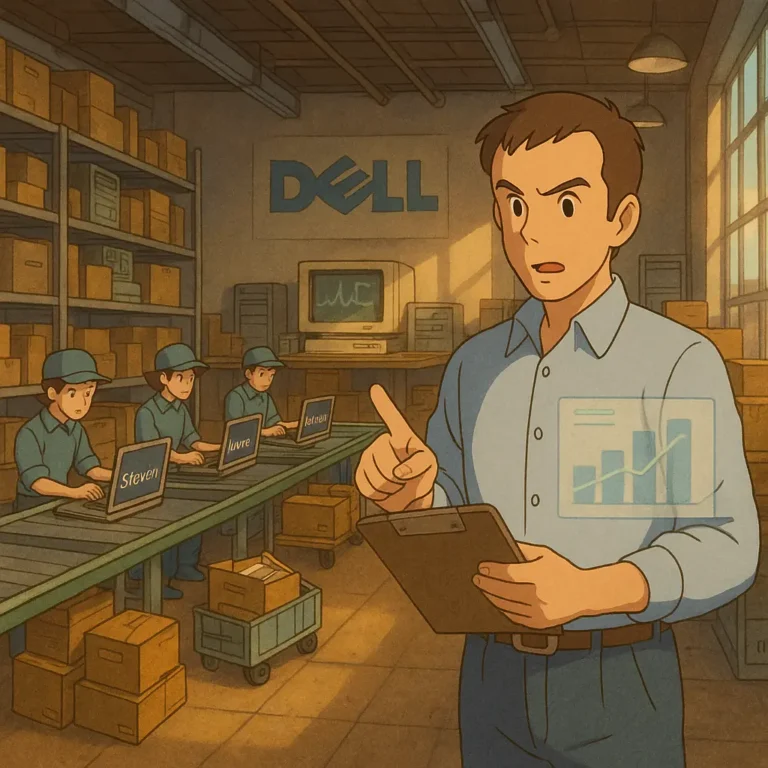
Despite best efforts, inventory management mishaps do happen. The important thing here is what you are going to do when it happens.
For every organization, savvy inventory management is indispensable — not just from a supply chain or operational standpoint but also from a financial one. With good inventory management, you can ensure a well-fed production line, stable output, and faster rate of meeting customer’s needs.
Proper inventory management is tied to your financial well-being. If you’re efficient, you will cut operational costs, be less likely to miss orders, and turn out a profit for your business.
Of course, managing an inventory can be a herculean task. Things can and do go wrong, and mistakes are common. That’s the point of this guide. In this article, I will cover some repeated inventory management related mishaps, as well as how to handle or even prevent them altogether.
So, what are some of the common inventory management mishaps?
1. Choosing the wrong transporter
Your choice of a shipping carrier or transporter will influence the flow of goods to your warehouse or worksite as well as the final delivery to the customer (if applicable).
If you choose the wrong shipper, a company that isn’t well-organized or doesn’t have an adequate network, you can expect missed order deadlines, possible delivery of damaged goods, miscommunication, and a general failure to follow through.
To choose a good company, look at previous work experience. Does the company have experience transporting the kind of materials you need? Do they have good reviews? Examine their network, reputation, transportation options, costs and surcharges, additional services, and similar details carefully.
2. Misunderstanding your boundaries
A fundamental aspect of designing effective security and loss prevention strategies is a thorough understanding of the bounds of your property. Knowing the exact dimensions and boundaries of your warehouse is crucial in identifying potential security weak spots and optimizing surveillance coverage.
This is where having a professional survey conducted becomes invaluable. A detailed survey provides precise information about the limits of your property, ensuring that your security measures, such as camera placements, fencing, and lighting, cover all necessary areas comprehensively. It also helps in planning for safe and efficient movement of goods within these boundaries.
3. Failing to monitor vulnerabilities
Integrating smart technologies into your security system can be a game-changer, especially for monitoring vulnerable and hard-to-see areas on your property.
Advanced technologies like motion sensors, smart cameras, and IoT (Internet of Things) devices provide real-time surveillance and alerts, enabling you to keep a watchful eye on every corner of your warehouse, including those traditionally blind spots.
To ensure these smart devices function optimally, it’s crucial to have troubleshooting references readily available. This could include manufacturer manuals, access to online support forums, or a quick reference guide created specifically for your setup.
Keeping these resources handy ensures that any technical glitches can be addressed swiftly, minimizing downtime and maintaining continuous, effective monitoring of your property. By leveraging smart technologies and being prepared for troubleshooting, you enhance the security and efficiency of your warehouse operations.
4. Relying on spreadsheets over must-have technologies
Many companies rely on manual methods to manage their inventory — such as entering data into spreadsheets and placing orders over the phone. And when you have humans in charge, you have human errors. Some examples are erroneous entries, failure to put in orders, bad estimates, and miscalculations.
It’s a good idea to explore alternative digital approaches and solutions. Not only can they simplify your work, but they also minimize errors — and they don’t always have to be expensive.
Some examples are invoicing software and a cybersecurity system. You can refer to a list of other must-have technologies here. All these tools work together for a seamless, automated process.
5. Inventory auditing gaffes
Inventory auditing, according to a CFI definition, is when you match the value of goods in your books to the actual inventory. This is both an official external requirement and an internal process.
In most cases, companies have an official audit once a year. Internal audits can be more frequent — such as once every six months, quarterly, or even weekly. It’s, unfortunately, very common for inventory audits to fail, which can result in fines or worse.
The causes can be many and varied. Some examples are mislabeling faulty organization, scanning errors, and misplaced items. Embezzlement is always a possibility. To prevent such errors, it’s a good idea to introduce an automated accounting system, train employees better, track all items, keep your warehouse organized, simplify processes, and label everything.
6. Inadequate forecasting
Inventory forecasting refers to the practice of estimating the inventory levels you need in the future to operate optimally. This allows you to ensure you place orders in time to meet production (or customer) demands without missing deadlines or having to stop operations due to a lack of raw material.
It can be very tricky to get this estimate right — seasonal demands, market fluctuations, and changing customer expectations can throw off the best of estimates. Many companies don’t have adequate demand planning and forecasting systems. They don’t use the right data, rely on estimates, and often end up ordering too much or too little.
You can tune up your demand forecasting by following best practices.
One, it’s a good idea to use historical data as well as “qualitative” data to make your estimates. This means asking suppliers for opinions, evaluating market trends, and involving sales teams in ordering decisions.
Two, always be aware of current demand trends and seasonal demand. Third, consider using forecasting software instead of relying on human estimates or calculating demand manually.
7. Not estimating purchase costs correctly
Last but not least is the fact that many companies estimate inventory purchase costs wrongly. There is an emphasis on purchasing products or materials as cheaply as possible from a supplier, and suppliers are often chosen solely based on the lowest purchase price. This leads to problems — the purchase price is only one of many factors influencing the final cost of purchase.
Keep in mind that the final cost of purchase will be influenced by more than the supplier’s set price — you also have to account for other factors like minimum order quantity, supplier service, product quality, payment lead time, supplier dependability, product lifespan, and similar factors.
It’s a good idea to use the Total Cost of Ownership (TCO) approach when estimating inventory purchase costs — it allows you to come up with a more holistic, accurate estimate for the purchase price (and, by extension, inventory carrying costs).
By eliminating or minimizing inventory management mishaps, you can prevent losses, run your business smoothly, and keep your customers happy. Inventory management is always a work in progress (WIP), and problems will keep cropping up. Effective troubleshooting is how you keep your process healthy long-term.
Chelsea Lamb has spent the last eight years honing her tech skills and is the resident tech specialist and co-founder of BusinessPop.net. Her goal is to demystify some of the technical aspects of business ownership and entrepreneurship







